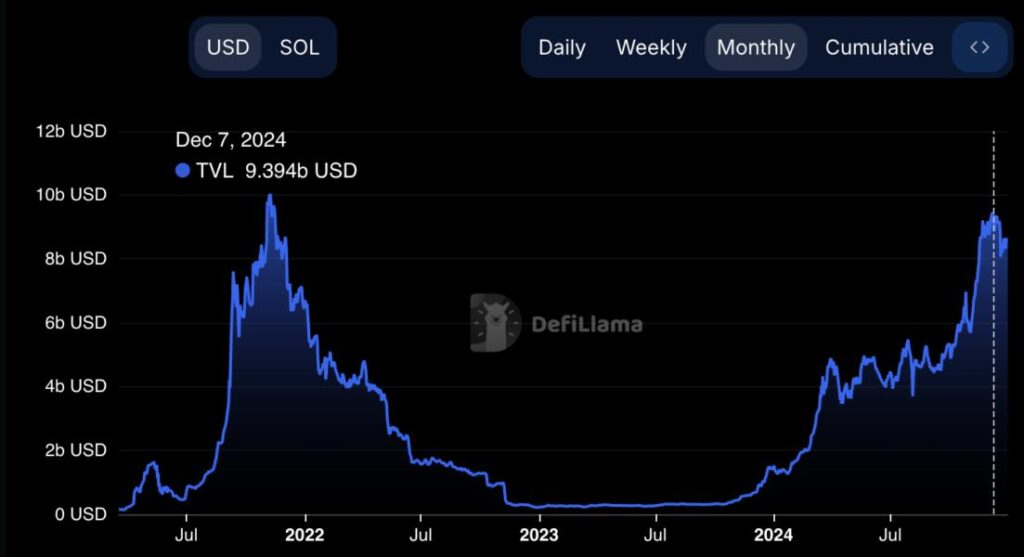Blockchain Technology: Reflecting on 2024 and Preparing for 2025
This special edition highlights the pivotal advancements of 2024 in blockchain technology and offers insights into what lies ahead for 2025.
Let’s explore the groundbreaking milestones, emerging trends, and anticipated innovations shaping the future of the crypto world.
This article is part of the latest release of The Blockchain Bulletin, a weekly newsletter diving into the technology behind cryptocurrencies, one block at a time. Subscribe now to receive it every Wednesday.
1. Highlights from 2024: Key Milestones in Crypto Technology
Ethereum’s Dencun Upgrade:
In 2024, Ethereum underwent its most significant network upgrade to date with the Cancun-Deneb (Dencun) update. This milestone introduced proto-danksharding, a feature aimed at lowering costs for Layer-2 rollups by simplifying data availability and boosting transaction efficiency. While the changes were a topic of robust discussion, they marked a critical step toward Ethereum’s long-term goals of scalability and efficiency, solidifying its position as the leading smart contract platform.
Solana’s DeFi Growth:
Solana achieved a major milestone, reaching $9 billion in total value locked (TVL) within its decentralized finance (DeFi) ecosystem — the highest in three years. This growth was driven by an influx of institutional interest and strategic integrations, with companies like Franklin Templeton and Société Générale leveraging Solana for tokenized asset initiatives. Solana’s reach also expanded with platforms like Robinhood adding SOL for trading and ETF filings linked to Solana by Cboe Global Markets.
Quantum Computing Concerns:
Google’s breakthrough in quantum computing, particularly its innovative quantum chip, sent ripples of concern through the crypto industry regarding blockchain security. The chip’s capabilities reignited discussions about the vulnerabilities of traditional encryption methods. Experts stressed the urgency of adopting quantum-resistant encryption to safeguard digital assets, as advancements in quantum technology could pose a potential risk to blockchain networks in the future.
Layer-2 Solutions Thriving:
Layer-2 solutions experienced a surge in adoption as projects like Arbitrum, Optimism, and Base addressed Ethereum’s scalability issues. Arbitrum recorded over a billion transactions, while Optimism expanded its ecosystem with OP Stack technology, fostering collaboration through its Superchain initiative. Base, Coinbase’s Layer-2 network, leveraged its parent company’s user base, attracting significant attention, including the launch of tokenized treasury funds by Franklin Templeton.
DeFi Innovations:
Prominent DeFi platforms made waves in 2024. Grayscale Investments introduced a fund centered on Aave, while Uniswap Labs unveiled plans for Unichain, a decentralized Layer-2 blockchain. MakerDAO rebranded as Sky, introducing new governance tokens (SKY), stablecoins (USDS), and innovative tokenomics under its Endgame Plan. These developments highlighted the sector’s ongoing evolution.

2. Upcoming Trends for 2025
AI and Blockchain Integration:
Artificial intelligence combined with blockchain technology promises advancements in identity verification, predictive analytics, and smart contract automation, offering innovative solutions while addressing AI’s challenges.Crypto-Friendly Jurisdictions:
Regions like Hong Kong, Dubai, and Singapore are emerging as hubs for regulated crypto innovation, attracting startups and institutional investors with favorable policies.Focus on Interoperability:
The demand for seamless cross-chain asset transfers will drive the development of interoperable blockchain protocols, encouraging collaboration across ecosystems.
3. Developer Spotlight: 2024 in Review
The Electric Capital Developer Report revealed a 35% rise in active blockchain developers in 2024. Solana led in attracting new developers, with 7,625 joining its ecosystem, surpassing Ethereum. Solana’s low fees, fast transaction speeds, and growing memecoin presence contributed to its appeal, strengthening its position as a competitor in the smart contract domain.

4. What’s Ahead in 2025
Ethereum’s Pectra Upgrade:
This upcoming upgrade, divided into two phases — Prague and Electra — will enhance validator efficiency, strengthen network security, and refine validator exit mechanisms.Scaling Innovations:
Zero-knowledge rollups and modular blockchains are poised to revolutionize scalability, enabling faster and more efficient blockchain operations without compromising decentralization.Decentralized Identity Solutions:
Blockchain-based identity systems could reshape user interactions in Web3, emphasizing privacy and ownership while reducing reliance on centralized authorities.

5. Final Thoughts
The year 2024 laid the foundation for crypto’s next phase, characterized by advancements in scalability, DeFi innovations, and heightened security measures. As we step into 2025, these developments promise to usher in a transformative era for the blockchain industry.




